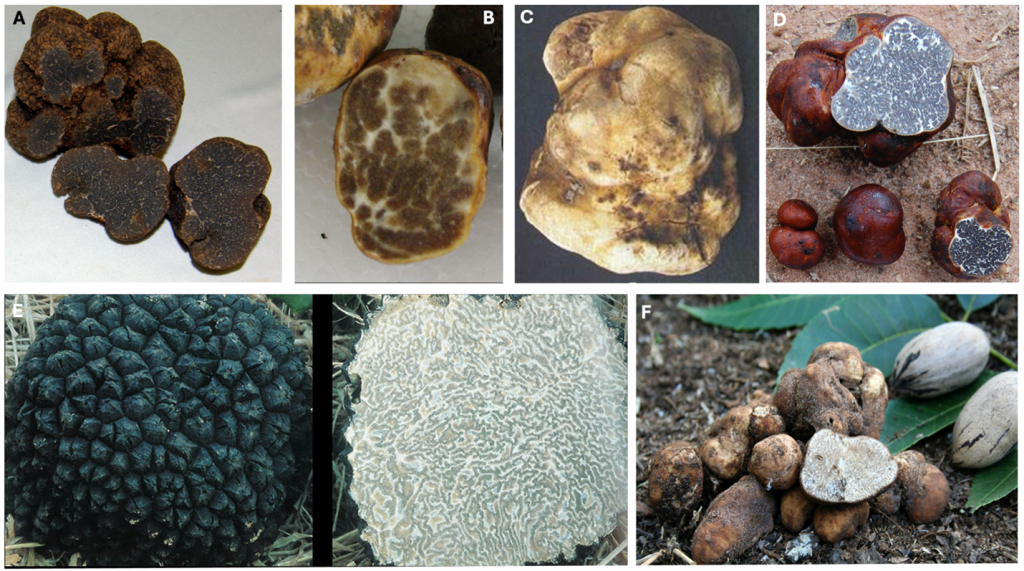Truffle Research
Human interest and fascination with truffle fungi has fueled truffle research over the past 100+ years, and it continues to do so today. Current truffle research is diverse and uses modern and multi-omic approaches to address different questions related to truffle diversity and function, mating and biology, morphology and development, ecology and symbiosis, genome and evolution, as well as agronomics and food science.
Truffle research has long benefited from truffle dogs able to smell and find truffles in natural and cultivated lands, as well as truffle dog owners and other truffle enthusiasts who share their knowledge, interest and discoveries.
Explore these resources and information on this website further if you would like to learn about truffles and how to participate in truffle research.

Many European and North American truffles species have been cultivated. The European black truffle, Tuber melanosporum, (A) is the most widely cultivated species. Tuber borchii (B), a whitish truffle species from Europe, is becoming more commonly cultivated in the US. Tuber magnatum (C) has the highest market value of any truffle and has recently been cultivated in Europe. There is increasing interest in cultivating this species in North America. Tuber canaliculatum (D) is native North American species that is being cultivated in Eastern North America. Tuber aestivum (E) is a summer European truffle species that is more adapted to cooler climates and is widely cultivated. Tuber lyonii (F) is a marketed North American truffle species that has been cultivated, and can sometimes be found to naturalize in North American truffle orchards.

